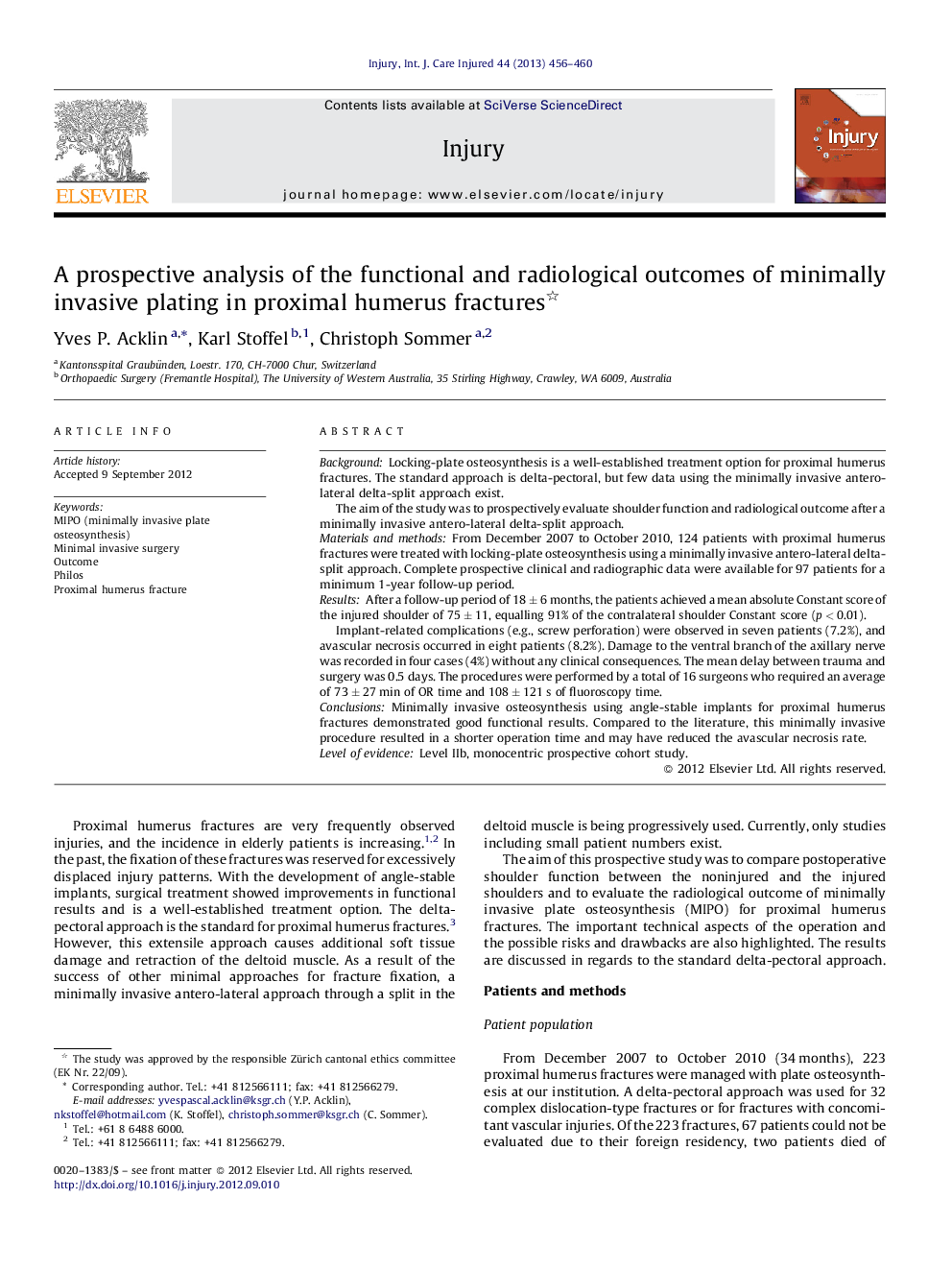| Article ID | Journal | Published Year | Pages | File Type |
|---|---|---|---|---|
| 3239442 | Injury | 2013 | 5 Pages |
BackgroundLocking-plate osteosynthesis is a well-established treatment option for proximal humerus fractures. The standard approach is delta-pectoral, but few data using the minimally invasive antero-lateral delta-split approach exist.The aim of the study was to prospectively evaluate shoulder function and radiological outcome after a minimally invasive antero-lateral delta-split approach.Materials and methodsFrom December 2007 to October 2010, 124 patients with proximal humerus fractures were treated with locking-plate osteosynthesis using a minimally invasive antero-lateral delta-split approach. Complete prospective clinical and radiographic data were available for 97 patients for a minimum 1-year follow-up period.ResultsAfter a follow-up period of 18 ± 6 months, the patients achieved a mean absolute Constant score of the injured shoulder of 75 ± 11, equalling 91% of the contralateral shoulder Constant score (p < 0.01).Implant-related complications (e.g., screw perforation) were observed in seven patients (7.2%), and avascular necrosis occurred in eight patients (8.2%). Damage to the ventral branch of the axillary nerve was recorded in four cases (4%) without any clinical consequences. The mean delay between trauma and surgery was 0.5 days. The procedures were performed by a total of 16 surgeons who required an average of 73 ± 27 min of OR time and 108 ± 121 s of fluoroscopy time.ConclusionsMinimally invasive osteosynthesis using angle-stable implants for proximal humerus fractures demonstrated good functional results. Compared to the literature, this minimally invasive procedure resulted in a shorter operation time and may have reduced the avascular necrosis rate.Level of evidenceLevel IIb, monocentric prospective cohort study.
